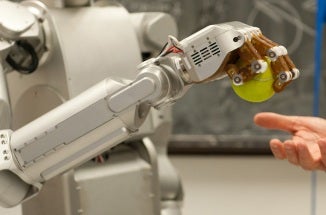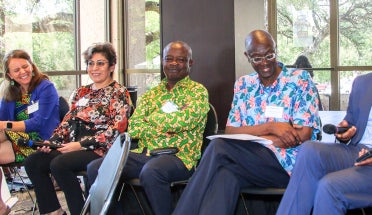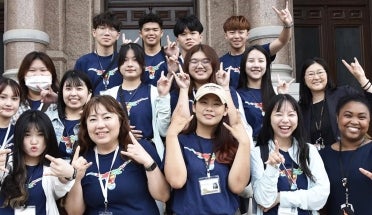
Computer-Brain Interface Results from UT-Switzerland Collaboration
- May 17, 2022
A research collaboration between The University of Texas at Austin and École Polytechnique Fédérale de Lausanne in Switzerland is developing a brain-computer interface to make physical tasks easier for people with disabilities. The technology makes communication between people and robots possible entirely through brain signaling.
Researchers on the project demonstrated the technology on a person wearing a cap that transfers brain signals to a robot. These signals are translated into data the robot can interpret, enabling it to carry out a task the person may not physically be able to do. The researchers also created an algorithm that allows the robot to learn an individual’s needs over time, said Aude Billard, researcher and professor at the Swiss institution.
Professor of electrical and computer engineering José del R. Millán said that although the team has successfully demonstrated the technology, he does not know how long it could take for it to become widely available.
“Even if the technology comes down to a couple of thousands of dollars, this can be too much,” said Millán, “especially for families [of] persons with disabilities where they [are] facing, already, so many financial struggles. You cannot impose that on top.”
Until brain interface technology becomes more affordable and accessible, Millán hopes it can still be utilized in hospitals or rehabilitation centers to benefit people with disabilities. He continued, “There have to be mechanisms in order for health care systems to take over, and this is our responsibility, to produce sufficient quality research to show that indeed, people can benefit from that.”



